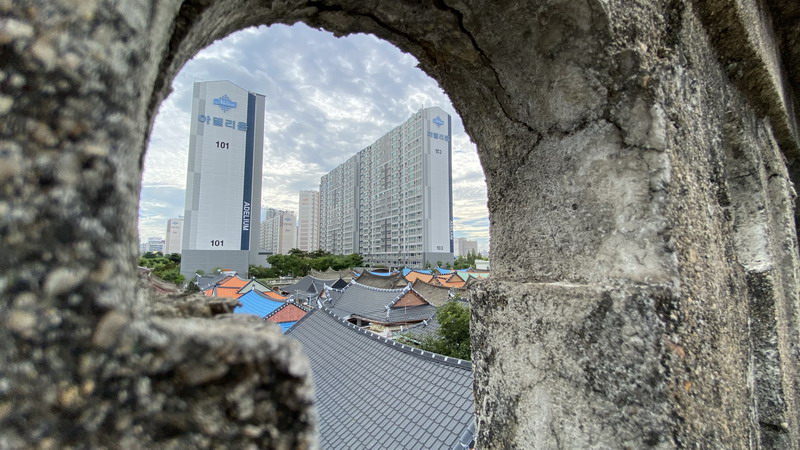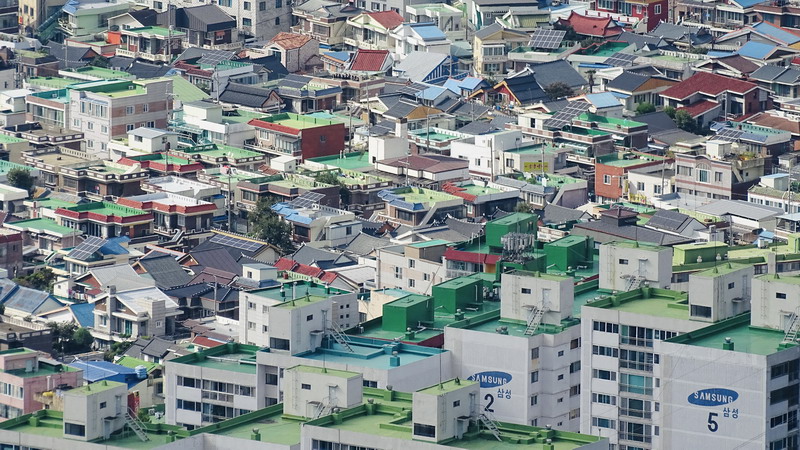Youth on the Bubble: Shopping for a Home in Gwangju’s Overheated Housing Market
By Isaiah Winters
The missus and I briefly looked into purchasing real estate in the City of Light and just as briefly recoiled in horror. After running the numbers, we found our choices ranged from the extremes of homelessness to overbearing debt, with a maze of mixed options in between. Realizing we had years of saving still ahead and no monied family behind, we began to pity ourselves – that is, until we remembered how much worse it was in other, larger metropolitan areas of Korea.
To take the first extreme, choosing homelessness in its realest sense is simply absurd, especially when both of us save about 50 percent of our monthly salaries. I could likely manage being homeless for a few months a la Down and Out in Paris and London and might even find short-term inspiration in it, but the missus would undoubtedly balk at any notion of penury as creative kindling. Needlessly conjuring Dostoevsky through self-imposed misery is for single 20-somethings.
As for the other extreme, going into overbearing debt for a modern apartment fits the current zeitgeist better, but with Korean financial authorities pressuring banks to suspend all mortgage lending this fall,[1] an overheated housing market seems like a bad thing to buy into. American millennials of a similar vintage should have no trouble recalling the fever-induced housing crisis of the late aughts. But even if we do try to keep up with the Joneses and buy a nice, new apartment, one of the deepest existential questions remains: Where do we put the grill?

Korea’s millions of barbeque-loving boomers face a similar dilemma when it comes to apartment life. Lacking even the smallest external balconies, their apartments force them to buy half a home’s worth of additional appliances and camping gear so they can approximate backyard cookouts at overcrowded campsites. That’s a major reason why virtually all apartments regardless of age don’t appeal to me – not to mention the travails of common-wall living arrangements. To be fair, rooftop apartments and those with external balconies do exist, though they usually cost an arm and a leg, so we’d be right back in the overbearing-debt category.
Thus, with neither homelessness nor apartment life stirring our loins, we were left to sort through a jigsaw of freestanding domiciles ranging from traditional hanok to new-ish jutaek houses. I’ve been able to inspect a few for-sale hanok up close, thanks to my friend Kang Dong-su – a hanok restorer with an eye for good buys – and although these prospects often come with a decent amount of outdoor space, we just haven’t yet found any that are big enough indoors for our taste. Finding hanok close to work has been another issue. Nevertheless, they’re still an appealing option for first-time homebuyers: You can get them on the cheap and fix them up to your liking without going into crushing debt.
To get just the right amount of indoor and outdoor space, we met up with a realtor to help us navigate the endless grids of jutaek houses near my workplace. However, most were in fact too big, too expensive, and too rundown for our liking. Two-story jutaek practically turn you into a landlord, as it makes more sense to rent out the second floor to help cover the monthly mortgage and interest. This has its advantages, but sharing your home with a renter comes with a bevy of annoyances, too. We already have full-time jobs, and the thought of regularly having to satisfy what are essentially upstairs customers over long periods didn’t appeal. At a few homes we saw, our presence with the realtor spooked the upstairs tenants quite badly, as they hadn’t known the houses they were living in were up for sale. It was quite a sad experience, to be honest.

“We were at least figuring out what kind of housing we didn’t want and why, which is about as important as knowing what we did want.”
The amount of repairs most jutaek need is also quite daunting. With property prices always on the upswing, owners have had little incentive to invest in upkeep over the decades. As a result, some of the houses we saw were literally falling apart. I used to do appraisals back home and was trained to look for certain red flags, so at one house, as soon as I saw corroded rebar exposed through chunks of brittle concrete, we left. Beyond the structural repairs, there’s serious interior overhauling that needs to be done, too. Jutaek interiors tend to be similarly awful, with fusty, old wood paneling covering the ceiling and walls, making things horribly dark inside. And then there are all the hidden repairs, like replacing old pipes, that’ll burn through the rest of your meager savings. Ultimately, the idea of becoming both a debtor and landlord, followed by years of piecemeal renovations, just seemed tedious.
It was around this point in our search that we finally gained a glimmer of optimism: We were at least figuring out what kind of housing we didn’t want and why, which is about as important as knowing what we did want. The irony, however, is that even if we knew exactly what we wanted and had the down payment ready to go today, the banks likely wouldn’t approve us for anything given the current lending restrictions, meaning the market is so overheated we can’t even afford to go into debt. This irony aside, now feels like a bad time to buy a house anyway. My gut keeps telling me this housing bubble can’t last forever, just like the last one couldn’t. So, all I want to do is grab some popcorn and keep socking away half that salary until I hear a pop.
Photographs by Isaiah Winters.
Source
Jung, M. (2021, August 20) Korean banks temporarily halt mortgage lending over household debt worries. The Korea Herald. http://www.koreaherald.com/view.php?ud=20210820000745
The Author
Born and raised in Chino, California, Isaiah Winters is a pixel-stained wretch who loves writing about Gwangju and Honam, warts and all. He particularly likes doing unsolicited appraisals of abandoned Korean properties. You can find much of his photography on
Instagram @d.p.r.kwangju.





